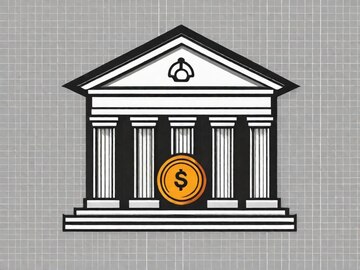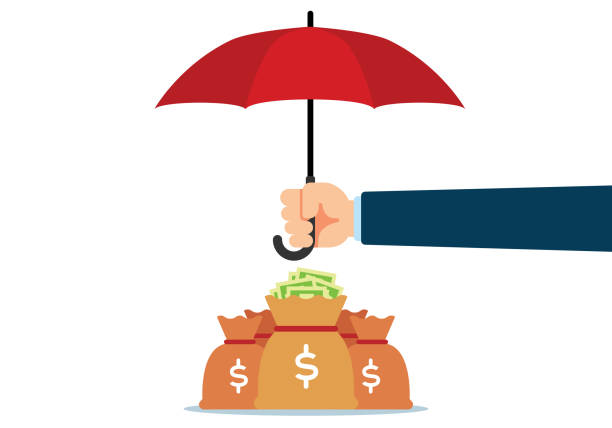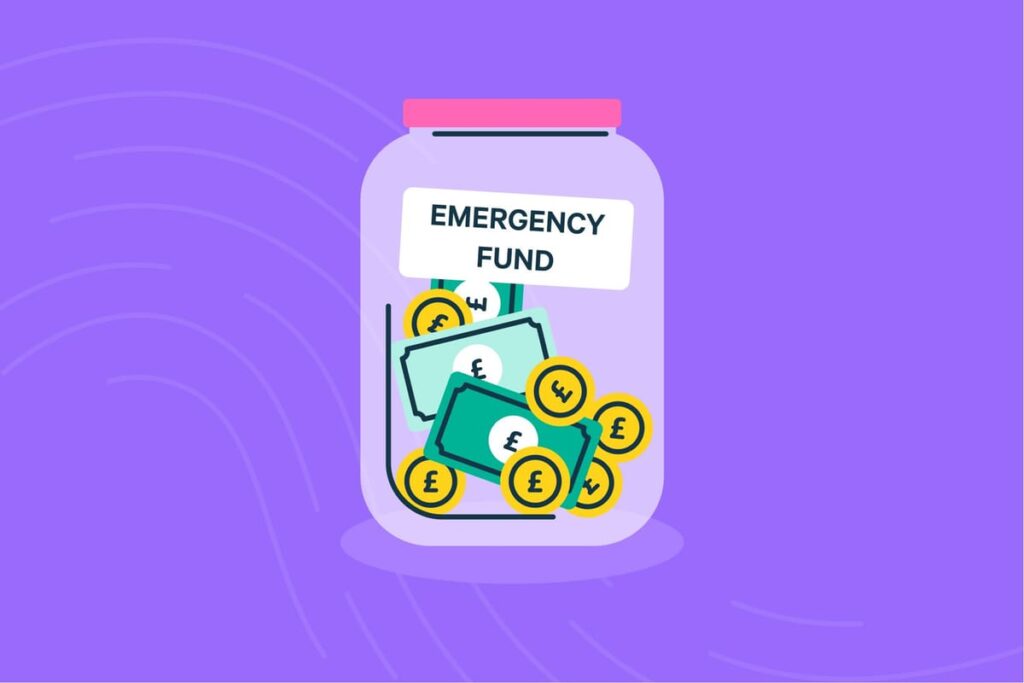In an unpredictable world, financial stability is a prized asset. Yet, life inevitably throws curveballs—a sudden job loss, an unexpected medical bill, a major car repair, or an urgent home maintenance issue. These unplanned events, often called “financial shocks,” can quickly destabilize even the most meticulously planned budget, forcing individuals into high-interest debt or derailing long-term goals like retirement or homeownership.
The shield against these shocks, and the cornerstone of genuine financial well-being, is the Emergency Fund. More than just a savings account, it is a strategic reserve—a high-liquidity financial safety net specifically designed to absorb unexpected blows, thus building profound financial resilience.
What is Financial Resilience and Why Does the Emergency Fund Matter?
Financial resilience is the ability of an individual or household to withstand and recover from adverse economic events. It is the buffer that prevents a short-term crisis from becoming a long-term financial disaster. Without this resilience, a job loss might lead to foreclosure, or a medical emergency might necessitate a destructive withdrawal from a retirement account.
The emergency fund is the most critical tool for achieving this resilience. It serves three primary functions:
- Debt Prevention: It allows you to pay for unexpected expenses with cash, avoiding the high-interest trap of credit cards, personal loans, or payday lenders, which would otherwise erode future financial health.
- Goal Protection: By ring-fencing funds for emergencies, you prevent dipping into savings earmarked for other crucial goals (e.g., a down payment, investment portfolio, or college fund).
- Peace of Mind: Knowing you have a substantial cash cushion drastically reduces financial stress and anxiety, allowing for clearer decision-making during a crisis.
In essence, an emergency fund transforms a potential financial emergency from a catastrophe into a mere inconvenience.
Part I: Defining Your Emergency Fund Goal
The primary question for anyone starting this journey is: “How much is enough?” While financial advice often coalesces around a standard range, the ideal size of your fund is highly personal, dependent on your specific circumstances.
The General Rule of Thumb
Most financial experts recommend saving three to six months’ worth of essential living expenses. This provides a robust cushion for the most common severe shock: a job loss.
- Three Months: A suitable target for individuals with high job security, a dual-income household, or significant accessible non-retirement assets.
- Six Months (or More): Recommended for single-income households, those with variable or commissioned incomes, freelancers, individuals with dependents (children or aging parents), or those in industries susceptible to economic downturns. Some financial professionals advise 9-12 months for maximum peace of mind.
Step-by-Step Goal Calculation
To determine your target number, you must first accurately calculate your essential monthly expenses. This is not the same as your total monthly spending.
- Track and Itemize: Review your last three to six months of bank and credit card statements. Categorize your spending.
- Identify ‘Essential’ Expenses: These are the costs you must pay to survive and maintain basic functionality.
- Housing (Rent/Mortgage)
- Utilities (Water, Electricity, Gas, Basic Internet/Phone)
- Food (Groceries, not dining out)
- Transportation (Car payment, Insurance, Gas, Public Transit)
- Insurance (Health, Life, Home/Renter’s)
- Minimum Debt Payments (Credit Cards, Student Loans, etc.)
- Exclude ‘Discretionary’ Expenses: Temporarily ignore non-essential spending like entertainment, vacations, eating out, high-end subscriptions, and non-essential shopping.
- Calculate the Total: Sum your essential monthly expenses.
- Set the Target: Multiply this essential monthly total by your chosen timeframe (3, 6, 9, or 12).
Example: If your essential monthly expenses total $3,500, a six-month fund goal would be $21,000.
Part II: Strategies for Building the Fund
The initial goal can appear daunting, but building an emergency fund is a marathon, not a sprint. Consistency and smart automation are key.
1. Make it Automatic and Separate
The most powerful strategy is to eliminate decision-making.
- Dedicated Account: Open a separate, dedicated savings account, preferably a High-Yield Savings Account (HYSA). This separates the money from your daily checking account, reducing the temptation to spend it. The higher interest rate also allows your money to grow, mitigating the effect of inflation.
- Automatic Transfers: Set up an automatic transfer from your checking account to your HYSA on payday. Treat this transfer like any other mandatory bill—it must be paid first, before any discretionary spending. Even a small, consistent amount (e.g., $50 or $100) will accumulate over time.
2. Prioritize and Cut Non-Essentials
For a period, building your emergency fund should be a primary financial priority, second only to meeting essential needs and, ideally, securing employer-matched retirement contributions.
- “Emergency Fund First” Budget: Temporarily reallocate money that was going toward non-essential spending. Cancel unused subscriptions, limit dining out, and delay major non-essential purchases.
- The Debt Snowball/Avalanche Caveat: While aggressively paying off high-interest debt is generally wise, many experts advocate for a Starter Fund of $1,000 to $2,500 first. This small cushion protects you from incurring new debt while you tackle the existing high-interest balances. Once high-interest debt is cleared, transition back to building the full emergency fund.
3. Capture Windfalls and Extra Income
Any unexpected injection of cash should be directed straight into the fund to accelerate your progress:
- Tax refunds
- Work bonuses or commissions
- Gifts or inheritances
- Money earned from selling unused items (e.g., decluttering or garage sales)
4. Optimize the Account’s Location
An emergency fund must be liquid (easily accessible) and safe.
- Liquidity over Return: The money is for immediate access, not long-term growth. It should not be invested in the stock market, real estate, or other volatile assets.
- High-Yield Savings Accounts (HYSAs): These online accounts offer better interest rates than traditional banks while maintaining immediate liquidity and FDIC (or equivalent) insurance protection.
- Money Market Accounts: Another viable option that offers liquidity and usually a slightly higher return than a standard savings account.
Part III: Maintaining and Replenishing Your Shield
Building the fund is only half the battle; maintaining it is the key to lasting financial resilience.
When to Use It (And When Not To)
The cardinal rule of the emergency fund is strict discipline in its use.
Use It For True Emergencies:
- Job loss/Income disruption
- Major, unexpected medical or dental expenses
- Necessary car repairs that compromise safety or essential commuting
- Major home repairs (e.g., burst pipes, furnace failure)
Do NOT Use It For:
- Planned expenses (e.g., vacations, holiday shopping, known insurance deductibles)
- Discretionary or impulse purchases
- Investment opportunities (The purpose is safety, not growth)
- Debt payoff (Use your regular budget for this, unless you are using the starter fund strategically)
The Replenishment Rule
If you are forced to use the fund, your top priority immediately shifts to replenishment. Treat the amount withdrawn as a new “bill” and immediately start rebuilding the fund to its full target level. This discipline ensures your financial resilience remains intact for the next unforeseen event.
Conclusion
Building an emergency fund is perhaps the most fundamental act of financial self-care. It represents a conscious decision to prioritize stability over instant gratification. By meticulously calculating your essential expenses, setting a realistic goal, automating your savings, and maintaining strict discipline in its use, you transform your relationship with money and build a fortress of financial resilience capable of weathering any storm. The journey begins with the first automated transfer—a small step that leads to a lifetime of financial security and peace of mind.




